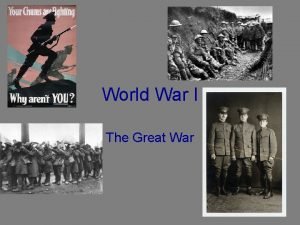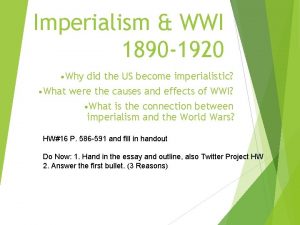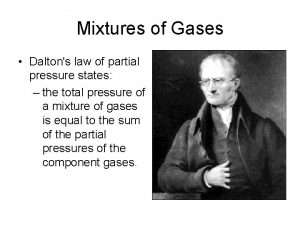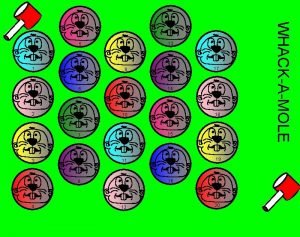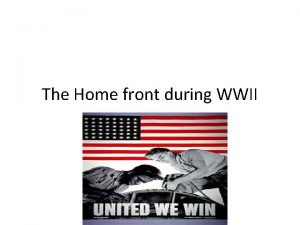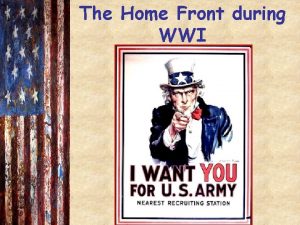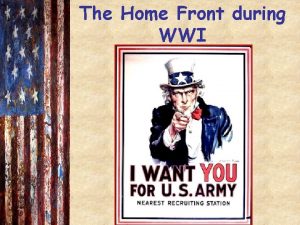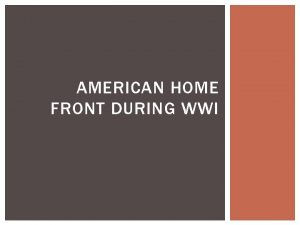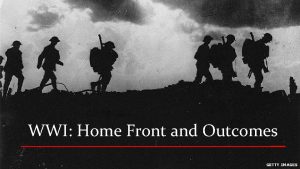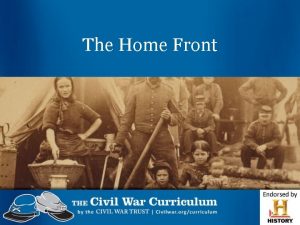THE HOME FRONT DURING WWI WHAT PRESSURES DID









- Slides: 9

THE HOME FRONT DURING WWI

WHAT PRESSURES DID THE U. S. FACE TO MOBILIZE FOR WAR? • US came into the war late and needed to catch up • Germany was planning a major offensive against the western front and to destroy British supply lines • Could the U. S. mobilize its economic production and its military forces in time to help the Allies? • Because training soldiers took time, the U. S. focused on providing war supplied while troops were being trained

HOW DID WILSON MOBILIZE THE AMERICAN ECONOMY FOR THE WAR? • Wilson created new war agencies to handle rapid mobilization of U. S. war production • Major increase in federal regulation/control of economy • The War Industries Board (WIB) • • • Headed by Bernard Baruch Set production priorities and established gov’t control over raw materials and prices Economy went from competing to cooperating for the war effort

• The Food Administration • • Headed by Herbert Hoover Encouraged Americans to plant victory gardens and participate in meatless days to have more food for troops • The National War Labor Board • • Headed by William Taft Maintained production by arbitrating between labor and employers

HOW DID THE GOVERNMENT FINANCE U. S. PARTICIPATION? • Wilson’s government raised $33 billion in two years with liberty bonds and taxes • Liberty Bonds • • Loans to the federal government from individual citizens Citizens buy war bonds and sell them back with interest to government • Taxes • Increased income and corporate taxes

HOW DID U. S. GOV’T ATTEMPT TO CONTROL PUBLIC OPINION? • The Committee on Public Information (Creel Committee) • • • U. S. propaganda agency headed by George Creel Propaganda designed to promote support for U. S. forces and turn public opinion against the Germans Included films, posters, pamphlets, and speakers urging Americans to watch for German spies to “do your bit” for war

• The Espionage and Sedition Acts • Espionage Act of 1917: provided imprisonment for people who attempted to start rebellion in the armed forces or obstruct the draft • Sedition Act of 1918: prohibited “disloyal” and “abusive” remarks about U. S government • 2, 000 people were prosecuted under these acts • Socialist leader Eugene V. Debs sentenced to 10 years in prison for speaking out against the war • Schenk v. United States (1919) • SCOTUS ruled the Espionage Act constitutional • Stated that the right to free speech could be limited when it represented “clear and present danger” to public safety

HOW DID THE U. S. BUILD ITS ARMED FORCES FOR WWI? • Selective Service Act • • • Required all men 21 -30 to register for the draft Draftees were selected by lottery 2. 8 million soldiers were drafter (out of 4. 7 million) • 2 million U. S. soldiers (dough boys) were sent overseas to fight with Allies • African Americans • • • Almost 400 k African Americans served in WWI Served in integrated units Du Bois believed service of African Americans were lead to equality after the war

HOW DID THE WAR EFFECT AMERICAN SOCIETY? • Women took advantage of the opportunities in the workforce as men entered the armed forces • • Munitions factories, railroad jobs, telegraph operators, Red Cross Their contributions led to the 19 th Amendment • A “Great Migration” of African Americans from the rural South to the industrial North • • Hoped to escape violent racism of the South, find better jobs and economic opportunities through industry 1910 -1920: 1. 2 million African Americans went North
 Cost pressures and pressures for local responsiveness
Cost pressures and pressures for local responsiveness Wwi eastern front
Wwi eastern front Italian gains in ww1
Italian gains in ww1 Why did the us enter wwi
Why did the us enter wwi How to calculate subcooling 410a
How to calculate subcooling 410a Partial pressure gas law
Partial pressure gas law Heart chamber pressures
Heart chamber pressures Chapter 18 handling social pressures
Chapter 18 handling social pressures Which of the following is a pronatalist pressure?
Which of the following is a pronatalist pressure? Strategic pressures on r&d
Strategic pressures on r&d

